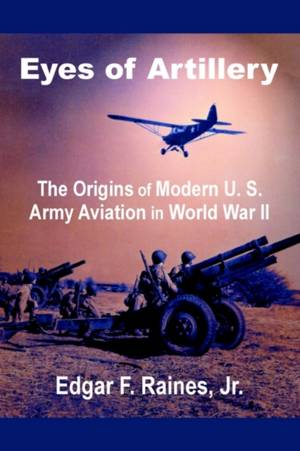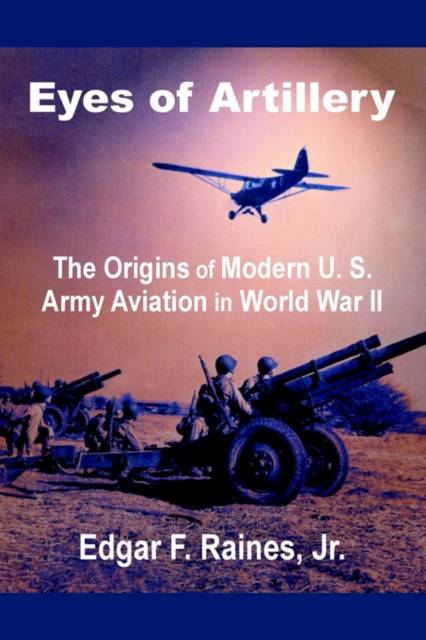
- Afhalen na 1 uur in een winkel met voorraad
- Gratis thuislevering in België vanaf € 30
- Ruim aanbod met 7 miljoen producten
- Afhalen na 1 uur in een winkel met voorraad
- Gratis thuislevering in België vanaf € 30
- Ruim aanbod met 7 miljoen producten
Zoeken
Eyes of Artillery
The Origins of Modern U. S. Army Aviation in World War II
Edgar F Raines
Paperback | Engels
€ 34,95
+ 69 punten
Uitvoering
Omschrijving
Warfare has had its third dimension, air, for so long that no soldier or airman now serving has a personal memory of the expectations, adaptations, or debate that accompanied its early years. Air enthusiasts often appear to forget that the most effective applications of air power have been in concert with ground forces. Indeed, for three wars running - World War II, Korea, and Vietnam - the close support technique of choice featured airborne eyes and ground artillery. This volume examines the institutional origins of modern Army Aviation by recounting the experiences of the men who flew observed fire missions in light aircraft for the Field Artillery during World War II. The War Department designated these aircraft "air observation posts," but the ground troops they supported affectionately referred to them by such names as "Maytag Messerschmidts" and "biscuit bombers" instead. Aircraft served as a key component of the Field Artillery indirect fire system - and also played a crucial role in the command and control of armored divisions during mobile operations. The author takes care to delineate how air observation posts interacted with each element of the combined arms team. Eyes of Artillery identifies the circumstances and debate that gave rise to the Air-Observation-Post Program. The development of military aviation generated an extended struggle within the Army for the control of aerial observation and posed related questions concerning how air and ground elements should interact with one another. The author gives primary emphasis to the period from January 1939, when the Field Artillery began to actively seek control of its own observation aircraft, until September 1945, when Japan surrendered and the War Department prepared to expand the organic light aircraft program to the other ground combat arms. Many of the traditions, concepts, and disputes that still characterize Army Aviation originated during these critical years.
Specificaties
Betrokkenen
- Auteur(s):
- Uitgeverij:
Inhoud
- Aantal bladzijden:
- 396
- Taal:
- Engels
Eigenschappen
- Productcode (EAN):
- 9781410201515
- Verschijningsdatum:
- 15/08/2002
- Uitvoering:
- Paperback
- Formaat:
- Trade paperback (VS)
- Afmetingen:
- 154 mm x 230 mm
- Gewicht:
- 598 g

Alleen bij Standaard Boekhandel
+ 69 punten op je klantenkaart van Standaard Boekhandel
Beoordelingen
We publiceren alleen reviews die voldoen aan de voorwaarden voor reviews. Bekijk onze voorwaarden voor reviews.











